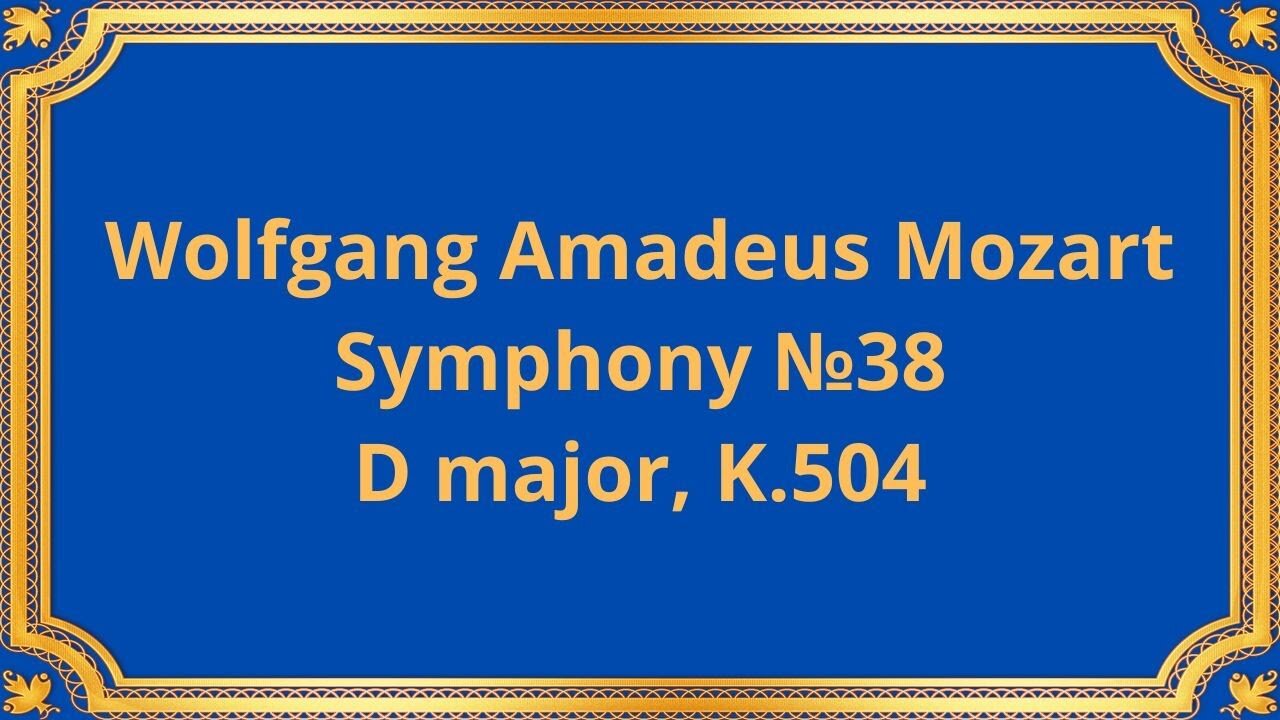Premium Only Content

Wolfgang Amadeus Mozart Symphony №38 D major, K.504
#Mozart#Chamber_music#Classical_music#Symphony#Musical_composition
Wolfgang Amadeus Mozart is one of the most renowned and celebrated composers of all time, with his works still being studied and performed to this day. One of his most famous compositions is Symphony No. 38 in D major, K.504, also known as the "Prague Symphony."
Symphony No. 38 was composed by Mozart in 1786, during a time of great creative output. This symphony was specifically commissioned by the citizens of Prague, who were huge fans of Mozart's music. The first performance of the symphony took place in Prague on January 19, 1787, and it was an immediate success.
The Prague Symphony was unlike any of Mozart's previous symphonies. It was longer, more complex, and included a larger orchestra. The citizens of Prague loved the symphony so much that they commissioned Mozart to compose another opera, which became The Marriage of Figaro.
Symphony No. 38 is composed of four movements: Adagio - Allegro, Andante, Finale: Presto, and Allegro. The first movement, Adagio - Allegro, starts off slowly and then quickly picks up speed, showcasing Mozart's use of dynamic contrast. The second movement, Andante, is much slower and more peaceful, allowing for a moment of relaxation before the final two movements.
The Finale: Presto is a high-energy movement that features a lively melody and showcases the virtuosity of the orchestra. The final movement, Allegro, brings the symphony to a rousing conclusion, with a fast-paced tempo and a sense of joy and celebration.
Mozart's use of instrumentation in Symphony No. 38 is notable. The symphony includes an expanded orchestra, with the addition of clarinets, trumpets, and timpani. This allowed Mozart to experiment with new sounds and textures, creating a more complex and sophisticated composition.
The Prague Symphony is often considered one of Mozart's greatest works and is celebrated for its innovative use of orchestration and dynamic contrast. It is a shining example of the Classical period of music, which emphasized balance, clarity, and elegance.
Wolfgang Amadeus Mozart's Symphony No. 38 in D major, K.504, is a masterpiece of the Classical period of music.
You have the opportunity to support the channel
https://www.donationalerts.com/r/radsiaral
-
 LIVE
LIVE
WeAreChange
2 hours agoMassive Developments In Vegas Investigation! UNREAL DETONATION, Shocking Details Emerge!
2,865 watching -
 1:02:55
1:02:55
In The Litter Box w/ Jewels & Catturd
21 hours agoAmerica Is Under Attack! | In the Litter Box w/ Jewels & Catturd – Ep. 711 – 1/02/2025
42.5K22 -
 1:45:25
1:45:25
The Quartering
4 hours agoHuge Update In Cybertruck Attack & Dark New Details From New Orleans Attacker & More!
81.2K44 -
 3:21:21
3:21:21
DemolitionDx
4 hours agochecking out multiple games
25.6K -
 2:14:38
2:14:38
Conspiracy Pilled
1 day agoPortal to Hell: The Elisa Lam/Cecil Hotel Case (S5 Ep 12)
19.8K4 -
 14:31
14:31
DeVory Darkins
1 day ago $7.47 earnedScott Jennings Drops Brutal TRUTH BOMB
25.5K153 -
 LIVE
LIVE
cbsking757
5 hours ago★TANKING RIVALS RANKED! GIFTED SUBS ARE LIVE! #marvel #marvelrivals
154 watching -
 4:04:55
4:04:55
Tate Speech by Andrew Tate
12 hours agoEMERGENCY MEETING EPISODE 99 - 2024 - TIME VACUUM
216K108 -
 26:14
26:14
Breaking Points
5 hours agoSH*TSHOW: FBI Retracts False Info on NOLA Attacker
50.4K30 -
 56:35
56:35
The Dan Bongino Show
7 hours agoReprise: Best Episode Of 2024 - 01/02/2025
268K1.27K